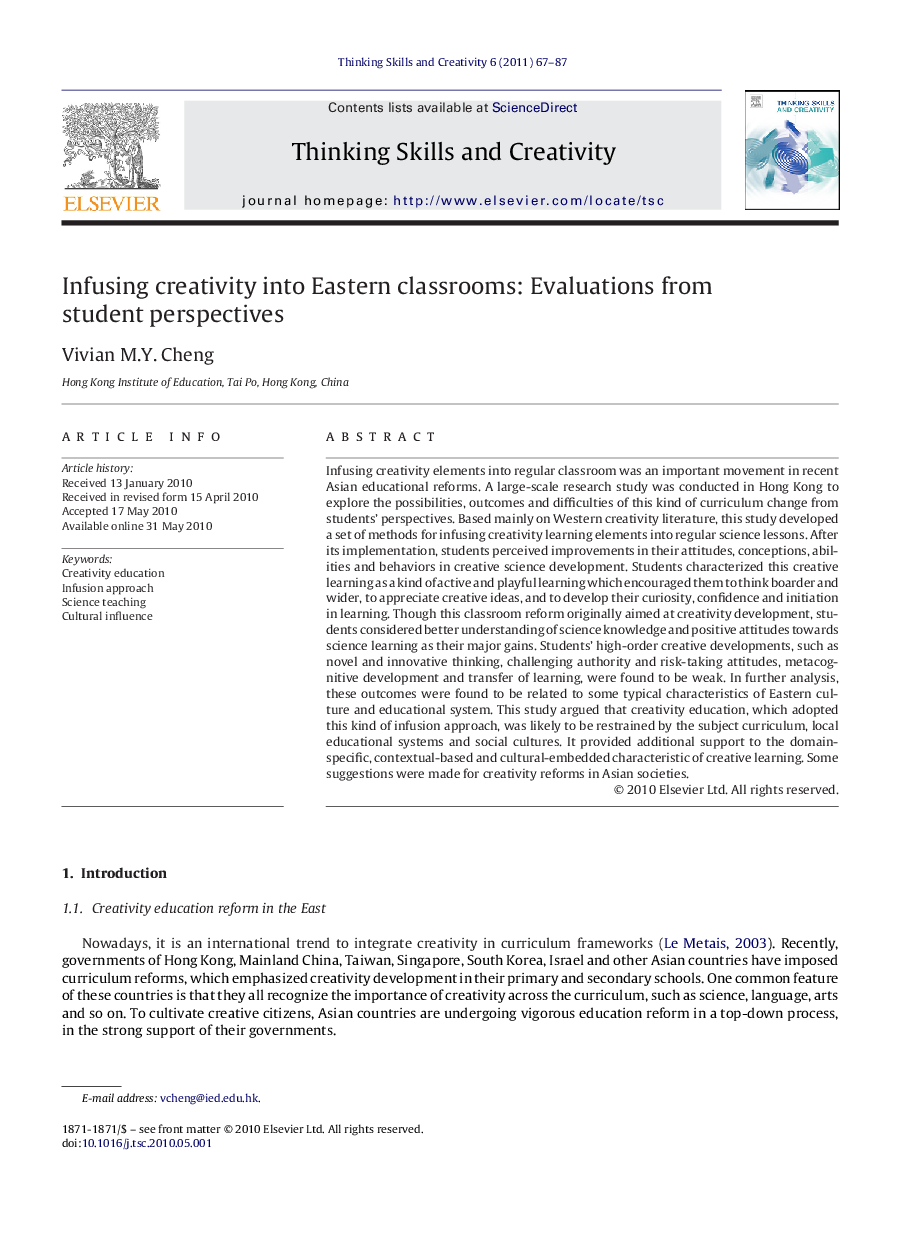| Article ID | Journal | Published Year | Pages | File Type |
|---|---|---|---|---|
| 375662 | Thinking Skills and Creativity | 2011 | 21 Pages |
Infusing creativity elements into regular classroom was an important movement in recent Asian educational reforms. A large-scale research study was conducted in Hong Kong to explore the possibilities, outcomes and difficulties of this kind of curriculum change from students’ perspectives. Based mainly on Western creativity literature, this study developed a set of methods for infusing creativity learning elements into regular science lessons. After its implementation, students perceived improvements in their attitudes, conceptions, abilities and behaviors in creative science development. Students characterized this creative learning as a kind of active and playful learning which encouraged them to think boarder and wider, to appreciate creative ideas, and to develop their curiosity, confidence and initiation in learning. Though this classroom reform originally aimed at creativity development, students considered better understanding of science knowledge and positive attitudes towards science learning as their major gains. Students’ high-order creative developments, such as novel and innovative thinking, challenging authority and risk-taking attitudes, metacognitive development and transfer of learning, were found to be weak. In further analysis, these outcomes were found to be related to some typical characteristics of Eastern culture and educational system. This study argued that creativity education, which adopted this kind of infusion approach, was likely to be restrained by the subject curriculum, local educational systems and social cultures. It provided additional support to the domain-specific, contextual-based and cultural-embedded characteristic of creative learning. Some suggestions were made for creativity reforms in Asian societies.
